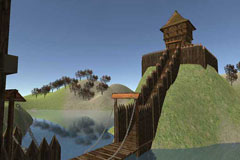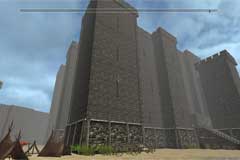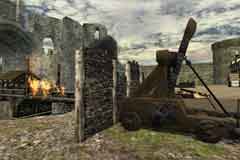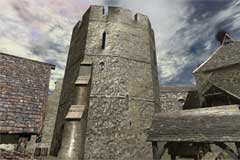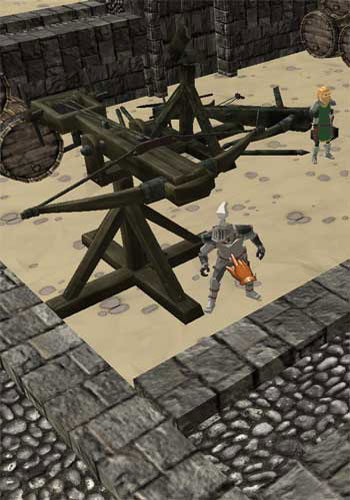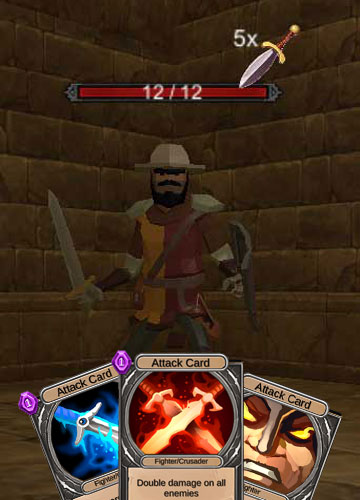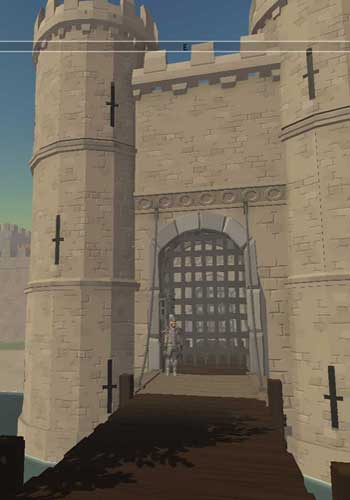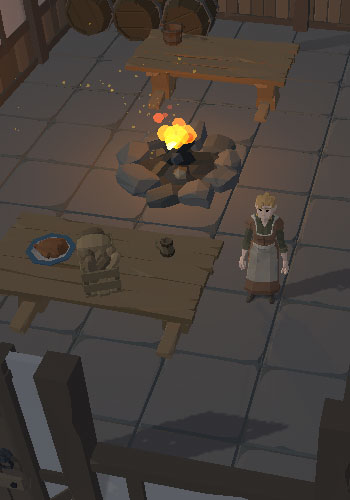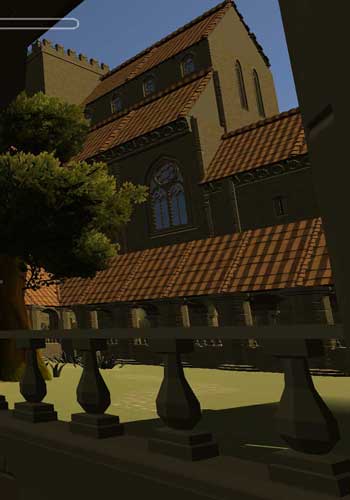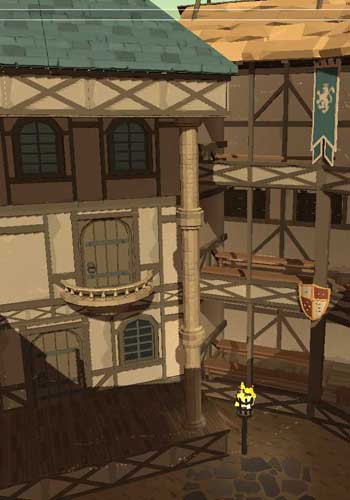
| Born | circa 1286 | Born At | |
| Died | 1326 | Buried At |
| Born | circa 1286 / |
| Died | 1326 / |
Related Episodes
Isabella, She-Wolf of France and death of Edward II (click here)
Event Location Map (click image to explore)
Family Tree Details
Despenser, Hugh (the younger) (b.1286? - d.1326)
See Also
People
Places
Timeline
In May 1306, Despenser was knighted at the Feast of the Swans at Westminster Abbey alongside Prince Edward, and in that summer he married Eleanor de Clare, daughter of powerful noble Gilbert de Clare, and Joan of Acre. Eleanor's grandfather, Edward I, had owed the elder Despenser 2,000 marks, a debt which the marriage settled. When Eleanor's brother, Gilbert, was killed in 1314 at the Battle of Bannockburn, she unexpectedly became one of the three co-heiresses to the rich Gloucester earldom, and in her right, Hugh inherited Glamorgan and other properties. In just a few years Hugh went from a landless knight to one of the wealthiest magnates in the kingdom. [1]
Eleanor was also the niece of the new king, Edward II of England, and this connection brought Despenser closer to the English royal court. He joined the baronial opposition to Piers Gaveston, the king's favourite (and Despenser's brother-in-law, through Gaveston's marriage to Eleanor's sister Margaret). Eager for power and wealth, Despenser seized Tonbridge Castle in 1315, after his brother-in-law's death under the misapprehension that it belonged to his mother-in-law; he relinquished it on discovering that the rightful owner was, in fact, the Archbishop of Canterbury. [2]
Despenser the Younger claimed the Lordship of Glamorgan in 1317 through his wife Eleanor de Clare. He then accumulated more lands in the Welsh Marches and in England. At various points he was a knight of Hanley Castle in Worcestershire, Constable of Odiham Castle, and the Keeper of Bristol Castle, Portchester Castle and Dryslwyn Castle plus their respective towns, and the region of Cantref Mawr in Carmarthenshire. [3]
Despenser the Younger rose to become Chamberlain and a close advisor to King Edward II, much as Despenser the Elder had been.
Hugh Despenser began obtaining lands in South Wales. He did this by exchanging estates he held in England and by obtaining grants from the king. He even obtained the Isle of Lundy. When the last male heir of the Marcher Lord Braose family died, Despenser was able to obtain the land that the family owned in and around Swansea. This angered the other Marcher Lords as they had customs that allowed land to pass into the hands of one another. The Marcher Lords threatened to start a civil war and it was agreed that a Parliament should be called to settle the matter. It was also agreed that Despenser was to be held in custody by Lancaster until the meeting but Despenser refused.
Thomas, Earl of Lancester held the first of two meetings to gather support of Barons and the clergy to remove the Despensers from power. The second meeting at Sherborn-in-Elmet near York was held on June 28th. [4]
Lancaster put a large amount of pressure on Edward to remove the Despensers from power. The Marcher Lords brought a force to London and threats were made that Edward would be removed from the throne if he did not comply. [4]
Both Despensers were banished from England. Hugh, the elder left without any fuss, but his son, Hugh the younger had different ideas and at first was given refuge by sailors of a Cinque Port and then started a spell of piracy. [4]
During his exile, Despenser spent a period of time as a pirate in the English Channel, At his makeshift trial, he would be accused 'of robbing two great ships to the value of £60,000 'to the great dishonour of the king and the realm and to the great danger of English merchants in foreign countries'. [5]
The Archbishop of Canterbury had ruled that the banishment of the Despensers was illegal at the end of 1321 and as soon as they heard the news, the Despensers returned to England. [4]
Finally the barons took action against King Edward and, at the beseeching of Queen Isabella, forced Despenser and his father into exile in August 1321. However, Edward's intent to summon them back to England was no secret. The king rallied support after an attack against Isabella's party at Leeds Castle, an event possibly orchestrated. Early in the following year, with Mortimer's barons busy putting down uprisings in their lands, the Despensers were able to return. Edward, with the Despensers backing him once more, was able to crush the rebellion, securing first Mortimer's surrender and then that of the earl of Lancaster, who was subsequently executed. [2]
Edward was now back in control of the country and at the Parliament held at York the rebels who had fought against him were punished, many being executed for treason. The Ordinances against Edward were repealed and those who had supported Edward through the bad times were rewarded. The elder Hugh Despenser was made Earl of Winchester. The younger Despenser was given large amounts of land forfeited by the rebels. [4]
In England, King Edward II was persuaded not to go to France by the Despensers. The Despensers were worried that because their position of power in England was precarious, if Edward left the country they could easily lose that power. Instead, it was decided that the King's son Prince Edward, only thirteen years old should go to France and pay homage instead. Before the prince left for France, the King bestowed the title of Count of Ponthieu on his son and the French King gave consent for him to to have Aquitaine as well. On the 12th of September Prince Edward left England and sailed to France. [4]
Prince Edward met Charles IV and paid him homage. The French king gave the Prince the title of Duke of Aquitaine and informed the English King that the French were going to retain the Agenais, an area of southwest France. Prince Edward had effectively been captured and his mother, Isabella the English Queen, had begun the plans of removing her husband from the throne of England. [4]
Preparations were made in England for the threatened invasion from Isabella. Preparations were made difficult because Hugh Despensers was so unpopular. [4]
Anticipating that he would receive no mercy, Despenser tried to starve himself before his trial, but he was unsuccessful. In order to legalise the process against him the tribunal that had sat in judgement on the elder Despenser was reconvened. Roger Mortimer, the Earls of Lancaster, Kent and Norfolk, and Thomas Wake and William Trussell presided. [5]
The King was captured in Wales at the Abbey of Neath. He had hoped to get some support in Wales but that was not to be the case. The Despensers were also captured. Hugh Despenser was given a short trial and executed as a traitor. Edward was taken to Kenilworth Castle and imprisoned. [4]
On this day in history:
3D Virtual Reconstructions
Transport yourself back up to a thousand years and explore historical buildings as they may have appeared in the past. Built using the popular game development tool Unity 3D, these reconstructions will run in the most of the popular web browsers on your desktop or laptop computer.
Page Navigation
Selection of references used:
- 1: Bury, J. B., The Cambridge Medieval History Vol Vii, https://en.wikipedia.org/wiki/Hugh_Despenser_the_Younger
- 2: Weir, A, Queen Isablla, Treachery, Adultery, and Murder in Medieval England, 2005, ISBN:978-0-3454-5320-4, Ballantine Books (2005), https://en.wikipedia.org/wiki/Hugh_Despenser_the_Younger
- 3: Phillips, Seymour, Edward II, 2011, ISBN:978-0-3001-7802-9, New Haven, CT & London: Yale University Press (2011), https://en.wikipedia.org/wiki/Hugh_Despenser_the_Younger
- 4: Caroline Bingham, The Life and Times of Edward II
- 5: Mortimer, Ian, The Greatest Traitor: The Life of Sir Roger Mortimer, 1st Earl of March, Ruler of England, 1327–1330, 2006, ISBN:ISBN0-3123-4941-6, London: Jonathan Cape (2006), https://en.wikipedia.org/wiki/Hugh_Despenser_the_Younger
See Also
People
Places






